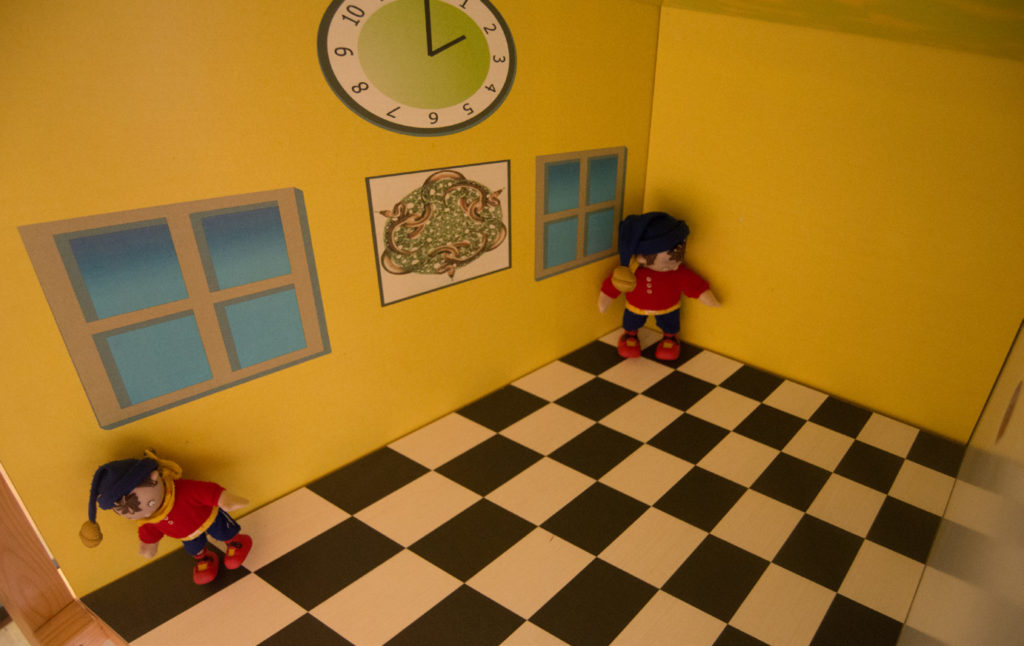An astonishing optical illusion where objects change in size.
Look through the front hole and look at the sizes of the figures, then look down the side.
This is a model of a distorted room, with the walls floor and ceiling not perpendicular, but that seen from a certain point of view has a normal appearance. Look at the size of the figures, however, they look very different.
- Hotel Area: Sala Emma Castelnuovo
- Minimum age: from 4 years old.
- Required time: 3 minutes.
- Number of participants: One or more people
- Keywords: optical illusion, proportion, geometry, 3D, point of view
- Taxonomy: Geometry


By looking at the room with profiles drawn in black from the hole in the front wall, our brain reconstructs it in the blue lines. Then he places the black figure on the right further back than it actually is in the position of the blue figure.
Concepts involved
It is necessary to look at the shape of the walls, the ceiling and the floor of the room, they are not, as usual rectangular, they are trapezes. Nor are their angles 90º.
It is also advisable to look at all the details, windows, tiling, clock.
Our eyes transmit flat images to the brain, it is the brain that mentally builds a representation of reality by imagining the spatial situation of objects. This mental representation is done automatically with the help of different elements:
- One is the combination of slightly different images sent by each eye. (here when looking through a hole this help has been removed)
- The other is perspective, distant objects are smaller.
We combine the perspective effect with previous experience of how they are and how big things are compared to others. We reconstruct Ames' room mentally as if it were orthoah (rectangular and perpendicular ceilings and walls between them).
In geometry, perspective and all related concepts: projection, proportion, Tales theorem, vanishing point, etc. are widely studied topics.
Creation, real-life apps
This illusion was first built by the American ophthalmologist Adelbert Ames in 1945.
Ames' room is a tool used in movies to create special effects. Modifying the walls, floor and ceiling of the set creates the appearance that the characters are much taller or much smaller than they actually are.
For example, in the trilogy of "The Lord of the Rings" it is possible to differentiate the stature of different characters without the need for computer manipulation of images in post-production. It has also been used in the 1971 film "Charlie and the Chocolate Factory.
